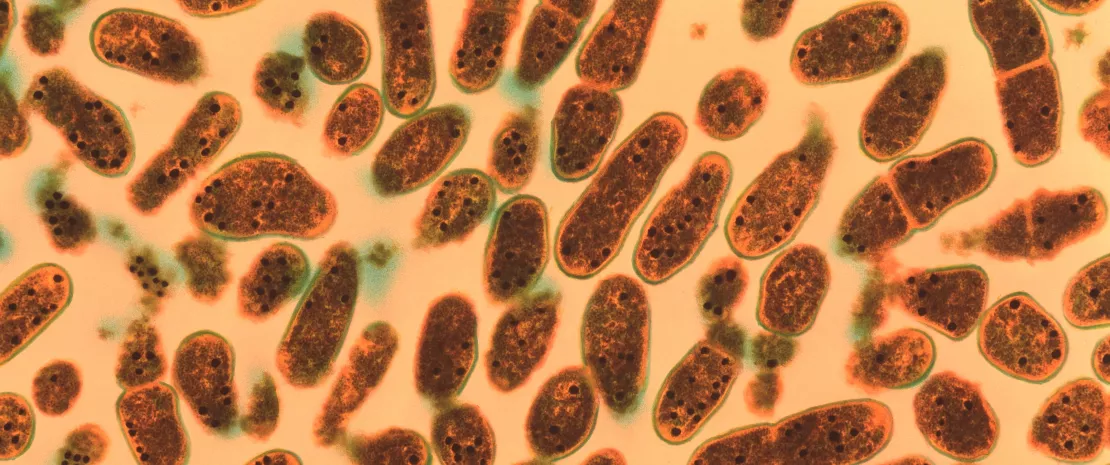Implication of vaginal microbiota in bacterial vaginosis and candidiasis
Literature selection
By Pr Markku Voutilainen
Turku University Faculty of Medicine; Turku University Hospital, Department of Gastroenterology, Turku, Finland
Sources
This article is based on scientific information
Sections

Gardnerella vaginalis bacteria. Coloured transmission electron micrograph (TEM) of Gardnerella vaginalis bacteria.
About this article
Author
Gardnerella and vaginal health: the truth is out there
Vaginal microbiota is classified in five major subtypes (community state types). Four of them are composed of Lactobacillus species. The vaginal innate immune system, epithelial cells, Toll-like receptors, and natural antimicrobial peptides are other components of the defensive system against pathogens. Lactobacillus genus has a central role in vaginal defense mechanisms via production of lactic acid and bacteriocins, and preventing adhesion of pathogenic bacteria. Bacterial vaginosis (BV) is characterized by an overgrowth of pathogens and a polymicrobial biofilm that adheres vaginal epithelium. Gardnerella spp. is the predominant specie at the biofilm and has the highest virulence.
BV is treated with metronidazole, clindamycin, or tinidazole. Many Gardnerella spp. isolates and other pathogens are resistant to metronidazole. Adjuvant therapy e.g. with Lactobacillus probiotics may increase the therapeutic effect of metronidazole. Studies to understand polymicrobial interactions among vaginal pathogens could lead to ecologically based treatments.
Associations between the vaginal microbiome and Candida colonization in women of reproductive age
Candida albicans (CA) is detected in vaginal microbiome in about 30% of women. Of 255 non-pregnant reproductive-aged women, 42 women (16%) were colonized by CA. The commonest vaginal microbiomes were classified as Lactobacillus crispatus-dominant (20%), L. iners-dominant (39%), and diverse (38%). Compared with white women and L. crispatus-dominant communities, CA was more common in black women and L. iners-dominant communities. In vitro, L. crispatus produced more lactic acid and inhibited more significantly pH-dependent growth of CA. The main result was that Lactobacillus species have different interactions with CA, and L. crispatus may prevent CA colonization more effectively than L. iners through higher lactic acid production.







